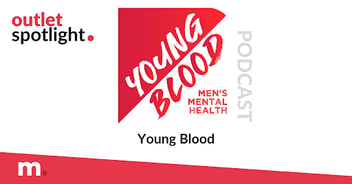
Over the past year we’ve caught up with 48 journalists for our weekly ‘Journalist Spotlight’ to find out more about their work, what drives them and the challenges they face in the media industry.
Among these interviews, the Herald Sun’s Brianna Travers told us about how she prepared for covering the 2021 Tokyo Olympics, Mridula Amin gave the inside story behind her multi-Walkley Award winning article and podcast for the ABC, and Georgie Pengelly shared her experience of starting a print magazine during COVID.
Each journalist’s experiences in the industry are unique, but the one thing we ask everyone is this:
“What does a media release need to stand out to you? What does it take for you to decide to cover the story?”
Here are the top nine responses of 2021;
Get in the shoes of the journalists’ audience:
This was without a doubt the most common insight given by journalists, proving once again that a considered, targeted media release distribution is generally far more effective than simply contacting as many journalists as possible.
Entertainment Presenter at Today Show Brooke Boney:
“I think you need to have a think about what it is that our audiences are after, because every time that we’re making the show, what we have in mind at all times is ‘what are people going to tune in for and watch?’.”
Reporter at ABC 7.30 Nadia Daly:
“The more targeted the better: know the journalist, the show and the network you’re pitching to.
Weekend Arvos Host on triple j Jess Perkins:
“If I was listening to the radio and they were talking about this, would I be enthusiastic to listen? Is it important or relevant? What’s the point of this?”
Personalise your pitch:
Similarly, it’s important the journalist knows that you’ve considered their specific publication or media organisation and field when you contact them with your story idea. Make sure to address them personally with their name and be clear why you think they specifically will be interested in your pitch.
International Reporter for The Sydney Morning Herald and The Age Latika Bourke:
“I will always try to respond to personalised pitches, whether it’s yes or no. Also, PR professionals should never be afraid to contact a journalist and refer to a story they have written that is relevant to their client; I am most inclined to read these emails out of all the press releases I receive. I have developed great contacts who have approached me using this method and I really appreciate it, particularly if it's a topic I have an ongoing interest in and cover long-term.”
Herald Sun Digital News and Food & Drinks Writer Kara Irving:
“I love press releases and emails that address me personally with relevant information.”
Be clear, to the point, and highlight the most newsworthy information:
It’s crucial that the most newsworthy information is highlighted clearly in the heading and the opening sentence of your pitch or release, regardless of whether this includes any company branding. If the story is interesting enough, the journalist will read on and find out this information, but most time-poor journalists won’t want to waste precious minutes trying to dig out a story angle.
Associate Editor at The Australian Cameron Stewart:
“It should be straight to the point, leading with the most newsworthy aspect. It should not contain jargon, it should be easy to read.”
Former Journalist, I Quite Sugar Author and Podcast Host Sarah Wilson:
“Spin is dead. The best way that we can communicate is be as upfront as possible and if that means saying ‘hey, this is a press release that’s really just trying to let you know XYZ’.”
Melbourne City News Reporter Grace McKinnon:
“I appreciate if it’s short and sweet. If the description on the email or the first sentence can tell me what it is and whether it’s relevant to me it’s fantastic.”
See our blog for more tips on crafting effective media release headlines and opening paragraphs.
Make sure you have provided story-worthy content:
Those in the media industry have identified ‘Seven News Values’ that give a story traditional newsworthiness. These are; timeliness, impact, proximity, prominence, relevance, oddity and conflict. Simply put, generally a story needs to demonstrate at least one of these values to be published or broadcasted by journalists. Once again, it’s important to make clear to the journalist the reasons you think this story deserves to be shared.
Australian Financial Review Reporter Duncan Hughes:
“It’s about news judgement. Something which is topical, fresh, interesting, new, and succinctly expressed. Just saying crisply what’s going on and why.”
Freelance Writer Alex McClintock:
“[I want to see] some indication that sending [the pitch] was not a box-ticking exercise, that the author actually believes there’s a story inside.”
Herald Sun Police and Crime Reporter Brianna Travers:
“It needs to have a news hook — so what’s the hook, what’s the angle, why would we pick this up. Make that really clear. “
Provide fresh and interesting spokespeople, experts or case studies to discuss the issue:
These people also need to be available and prepared to speak to a journalist at short notice.
Channel 9 US Correspondent Alison Piotrowski:
“A good press release … will always catch my attention if they offer up an expert in their field who I haven’t heard from before. In the fast-paced 24-hour news cycle all news outlets at times fall into the bad habit of using the same ‘talent’ over and over. Finding a new voice on a subject is a breath of fresh air.”
ABC Rural Presenter Warwick Long:
“The biggest frustration I have as a radio reporter is when a release is sent out but the talent is unavailable.”
Similarly, try to highlight the human interest/impact angle of your story:
Regardless of the story or it’s ‘news value’, most journalists will also be wanting to highlight how exactly the issue impacts people.
NewsCast Audio Producer Andrea Thiis-Evensen:
“For me it’s all about the person that you’re interviewing. News is not my thing, for me it’s about the human interest aspect.”
ABC Reporter and Photojournalist Mridula Amin:
“What really cuts through for me is when that person has thought about how to tell the story, and usually how to tell the story means that they’ve found people or they have people lined up to try and help tell that story. Usually, for every kind of high concept, the story itself is not enough, what we need is human beings to carry it — the case studies.”
If possible, supply multimedia such as images, infographics, or videos:
Although the most important aspect of any pitch is having a great story, it’s also helpful and sometimes even integral that a journalist has additional assets to contribute to the broadcast or publication.
Herald Sun Police and Crime Reporter Brianna Travers:
“When people pitch sometimes they’ve got a great idea and it’s a great story, but then they’ll fall down on being unable to provide talent or a case study available to be photographed.”
Freelance Writer and Editor Jessica Morris:
“I love action points! My favourite presser kits include downloads to high-res photos, music or film to download/stream, talking points and links to the subject’s social media.”
A Current Affair Reporter Alexis Daish:
“Sometimes, powerful statistics can really hit at the heart of a story and tell people why a particular issue matters. Another thing I find really useful is timelines – a chronology of events laid out clearly to explain how we got to the current situation.”
Provide all the information needed in the body of your email:
Once again, any opportunity to save time-poor journalists from extra hassles, such as downloading PDF media releases, will be appreciated. Try embedding smaller ‘preview’ images in your email with the higher resolution picture attached so a journalist can access it if needed.
CAAMA Senior Journalist Philippe Perez:
“I hate attachments, although I know sometimes it’s a bit unavoidable, but I would prefer copy to be kept in the body of the email.”
Email is the preferred first contact method for most journalists:
Finally, most journalists agree that if the contact is not known to them already, they would prefer to receive story pitches by email.
Presenter, Producer and Horticulturist Graham Ross:
“I don’t like answering calls that I don’t know, but my email is pretty much everywhere if you need to reach out.”
Need more tips on how to make the perfect pitch? Get in touch at team@medianet.com.au.




